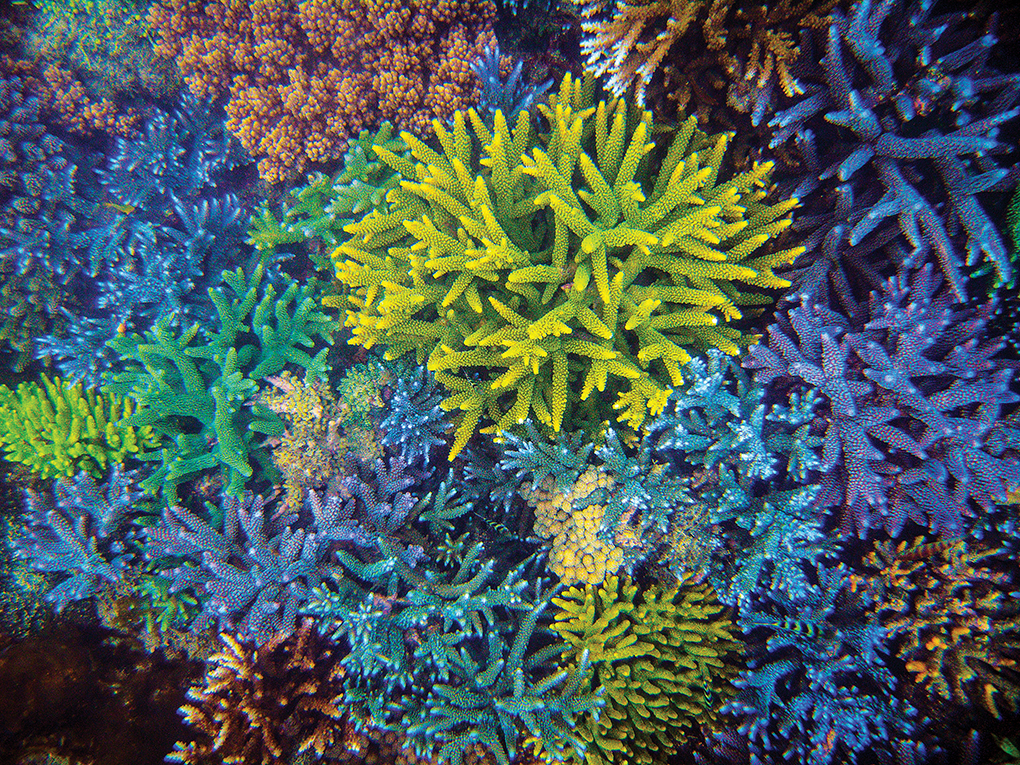
Broodstock colonies display the appeal of corals available from sustainably operated Indonesian mariculture farms. Image taken at a Bali Aquarium mariculture farm by the author.
Trade in live corals resumes, but major challenges loom
By Vincent Chalias,
Bali Aquarium
Excerpted from CORAL, March/April 2020
The new decade has started off with good news for Indonesia’s aquarium trade, which is historically one the world’s primary sources of marine fishes and corals, both wild-collected and farmed. After an export ban that lasted a very long twenty months, participants in the country’s coral industry were told in mid-January 2020 that not only would the export of maricultured corals be re-opened under certain provisions, but also that some wild corals would once again be allowed for export.
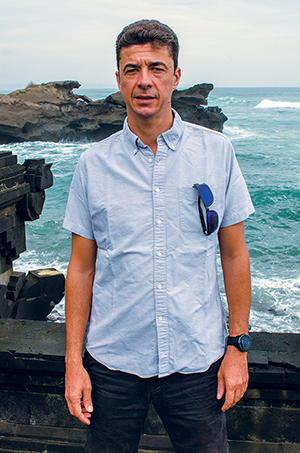
Marine scientist and veteran mariculturist Vincent Chalias in 2019 during the extended ban on coral exports from Indonesia.
While this information sounds very good for the industry, the actual situation on the ground is still somewhat vague. As someone with a personal and professional stake in coral mariculture in Indonesia, I can see that the battle is not yet over, and the conditions under which coral exports may resume are significantly different from those that we knew in the past.
Important questions remain: What happened to cause the closure of Indonesia’s coral exports? What did it take to get the situation fixed? Can we learn from our mistakes? And perhaps most importantly, what will Indonesia’s coral trade look like in the future?
What happened?
The origins of Indonesia’s coral export ban started with the election of Joko Widodo as President, and the nomination of Susi Pudjiastuti as Maritime Affairs and Fisheries Minister in 2014. The first years of her tenure were oriented toward much more complicated and bigger issues, such as territorial sovereignty of the country’s waters and rampant illegal fishing. Pudjiastuti made headlines worldwide for seizing and blowing up foreign fishing ships that were plundering Indonesia’s stock of food fishes to supply markets throughout Asia. A chain-smoking, tough-minded entrepreneur, Susi was credited with driving out thousands of pirate fishing vessels, and then she turned her administrators loose on a long list of fisheries issues, such as boat sizes, which nets were being used, the lobster trade, shark finning, the live grouper trade, and the Manta Ray gill raker industry.
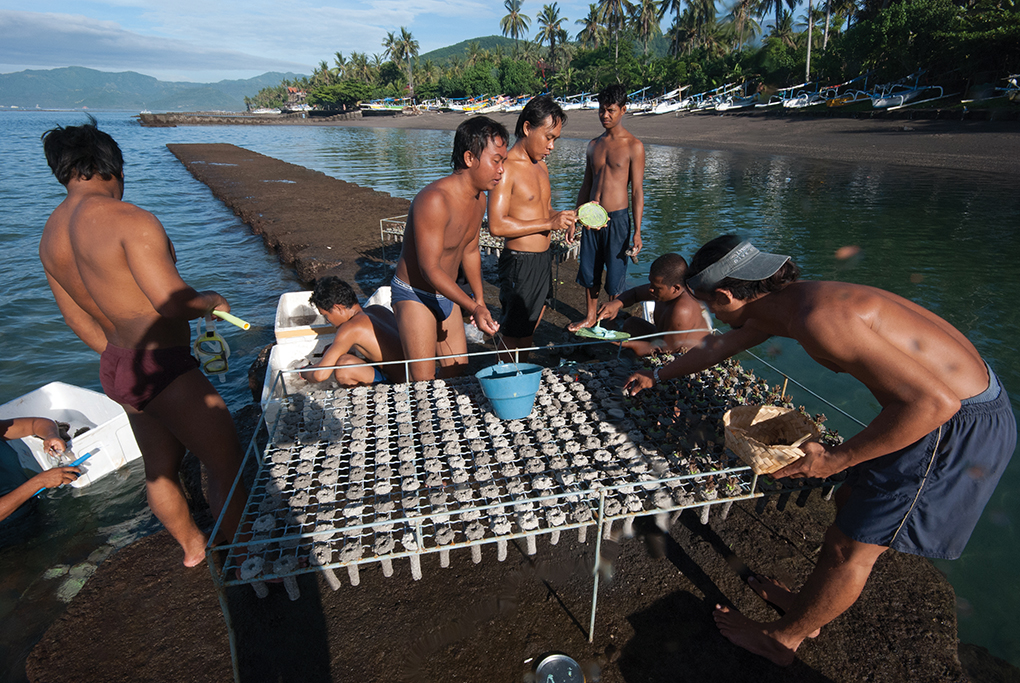
An Indonesian ban on all live coral exports put local islanders such as these out of work from mid-2018 to early 2020.
Exports of live corals for the aquarium trade came next. During 2016 and 2017, a series of domestic coral shipments were busted by Indonesian authorities because they lacked proper documentation. It proved difficult to get to the bottom of the issue and locate the people responsible for these shipments and address the problems. The complicated processes for collecting, culturing, and shipping corals eventually lost Pudjiastuti’s attention, given the constraints of limited time, knowledge, resources, and enough staff to actually investigate and fix the trade. She pulled the plug on the coral export trade, using the only means at her disposal.
In May 2018, Pudjiastuti’s department stopped
issuing health certificates for all corals and cut any form of communication about the trade. Without certification, no corals could be exported. As there was no way to communicate or understand what was going on, the
industry was unable to reform, fix, and eventually re-open
exports. Nothing was ever communicated on the subject of Indonesia’s coral trade, and fisheries officials knew that if they said anything, they would be fired.
So long as Pudjiastuti continued this policy, the trade would remain closed, end of story; it was a new status quo. The entire aquarium industry in Indonesia found itself at the mercy of one single person.
What did it take to get it fixed?
Not much, actually, just a change in fisheries minister, seeing Pudjiastuti replaced with Edhy Prabowo in late 2019. However, new changes have made the trade more complicated. To address concerns, the ministry added a couple of controls and audits, instituted a few shipment checks, and piled on a thick new layer of paperwork. Overall, this increased the bureaucracy that surrounded the trade. The idea behind these new hurdles is to basically double the paperwork, surveillance, and shipment inspections.
Is this doubling-down of clerical tasks going to fix the problems with Indonesia’s coral trade? I’m not sure. At the end of the day, the problem remains the same. I’m afraid that paperwork requested by people with very little knowledge about this industry, reviewed by people who don’t really understand the industry they are monitoring, will not be effective.
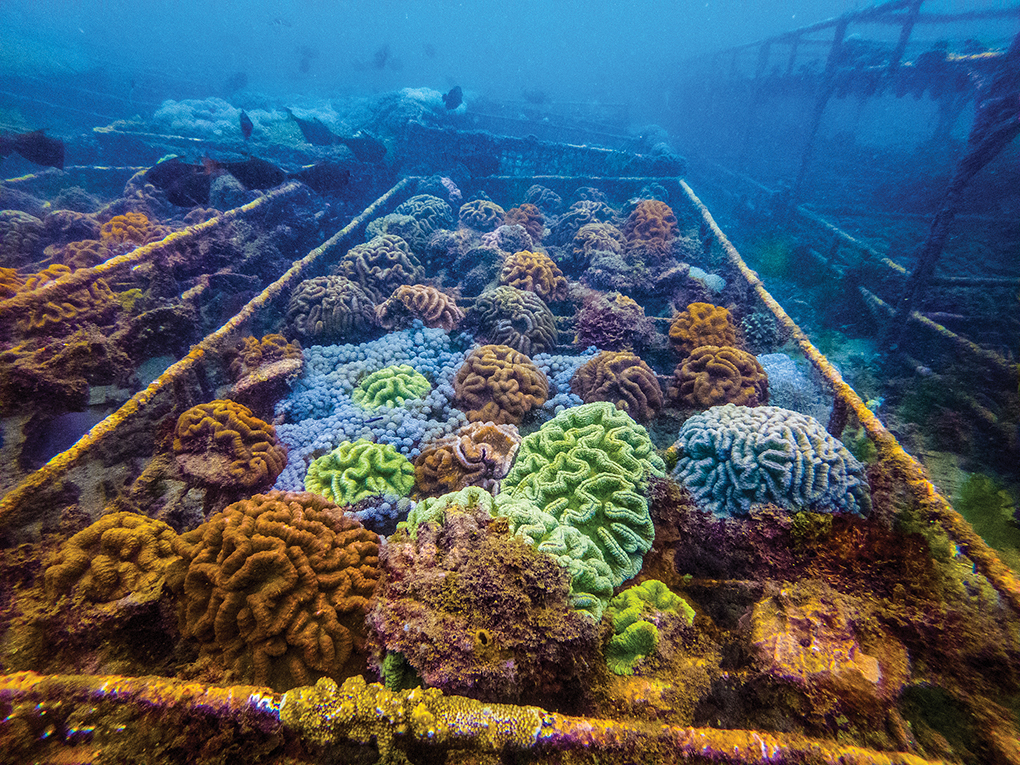
Rack of Symphyllia large-polyp mother colonies at Bali Aquarium.
Indonesia’s coral trade is a work in progress, and the fisheries ministry is slowly building up the infrastructure and the human resources needed to control and regulate it among many other fisheries. As the first coral exports started in late January 2020, there was a complete lack of preparation in shipment inspection, which resulted in many delays, especially with shipments departing from Bali. As a result, I think we can expect many more changes in regulations and procedures to come in the near future. There is still a lot of uncertainty surrounding the way the fisheries department is going to control everything.
At the moment, the only wild corals allowed for export are corals that were in exporters’ facilities when the ban was put in place. This stock was audited and quantified in December. During the same time, the stock of maricultured corals from the ocean farms was also audited. In January, this audited stock of mariculture corals and wild corals was allowed to be exported.
For wild corals, when the backlog of pre-ban stock is exhausted, wild-coral exports are over. The only way future wild corals might be harvested and approved for export is if the exporters’ association can manage to get a 2020 quota for wild corals accepted by the fisheries department. This is a completely new challenge, but not the only one the export association must overcome, as they also need to overturn a 2016 regulation that stops wild collection by 2021. The road is still long, and the journey has only started.
For cultured corals, the export future is a bit different. Coral farmers have mother colonies, and farms can keep producing corals. The current plan is that farms will be audited every 2–3 months to see what they have ready to ship. The new form of audit is not clear, and to date, only permits for what was audited in December 2020 have been issued. All audited frags must be inspected and tagged by a different government agency, which is dependent on two different ministries. This scheme represents an entirely new and increased level of supervision. In Bali, the government plans to invest in a new screening facility, with another set of X-ray machines and climate-controlled rooms for enhanced inspections. This is why importers, wholesalers, retailers, and hobbyists must forget about the past: Indonesian corals will never be available like they were before, at the price they were. Farming and exporting corals in Indonesia just became a lot more complicated and expensive.
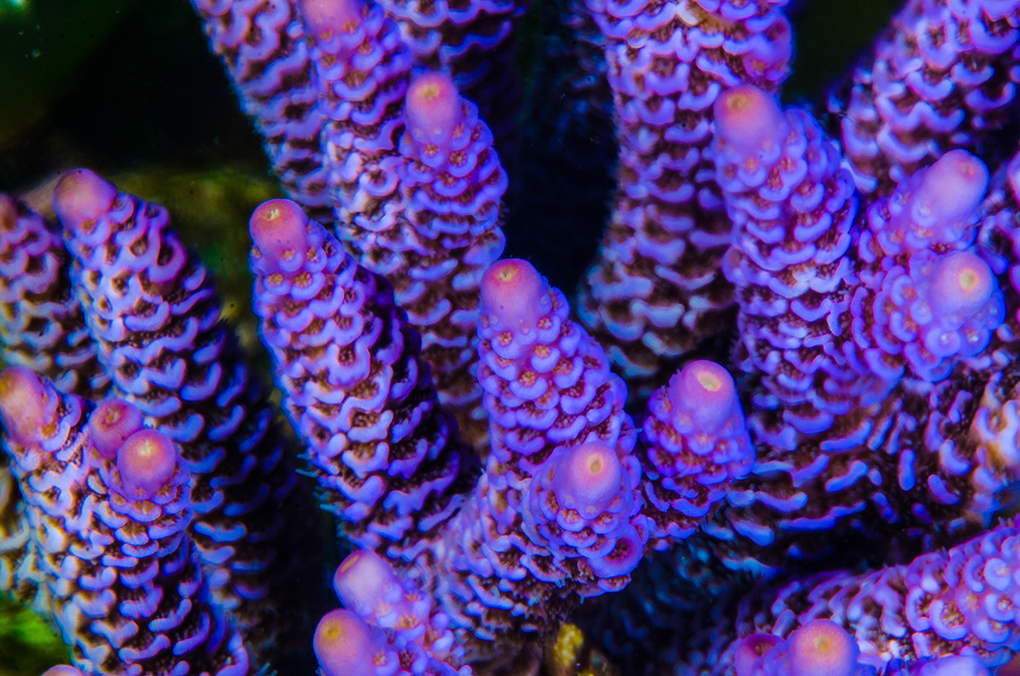
Maricultured Acropora millepora. The days of collecting wild corals in Indonesia may be numbered.
There was one positive outcome from the export closure: the ban breathed new life into the local Indonesian trade organizations. The Indonesian Coral and Shell Exporter Association (AKKII) combines wild collectors and some mariculture companies, whereas the mariculture association from Bali and east Java Indonesian Archipelago Ornamental Coral Farmers Association (KPKHN, Kelompok Pembudidaya Karang Hias Nusantara) exclusively represents mariculture interests. This split created a competition, which forced these two groups to be independently active. Before the closure, AKKII never did much apart from dividing and distributing the national export quota and helping mediate small local issues with the government. AKKII never set standards, interfered with business operations, or reprimanded any member. Now that there are competing agendas, effectively the split between wild-harvest and aquaculture, both organizations are active. The effect has brought increased lobbying power and invigorated an otherwise quiet mariculture side of our industry.
With the need for ongoing interaction and lobbying, significantly more money will be spent on organizing and developing the trade. We have no time to waste, and a lot of work lies ahead of us. The pressure is great on both associations, and we need to keep pushing them and supporting them to go in the right direction.
Can we learn from our mistakes?
We have to be cautious. In the past, trade associations never took action to try to regulate the trade. They would position themselves between members and work to keep the industry afloat, maintaining the status quo for as long as possible. The strategy was to not make any waves, but now we can see what happened due to our inaction. It didn’t really work out, but because it’s often the Indonesian way, I really doubt this will change much.
Coral mariculture has great benefits for the environment, and we need to improve our communication so we can educate and spread that message. Coral farmers cannot just follow the wild-coral trade strategy. It appears that the reinvigorated associations are ready to take steps toward proper stewardship; the mariculture association (KPKHN) has already signed an integrity pact with the fisheries department, so some parties are moving in the right direction.
Hopefully the new regulations put in place by the fisheries department will be enough to manage the trade.
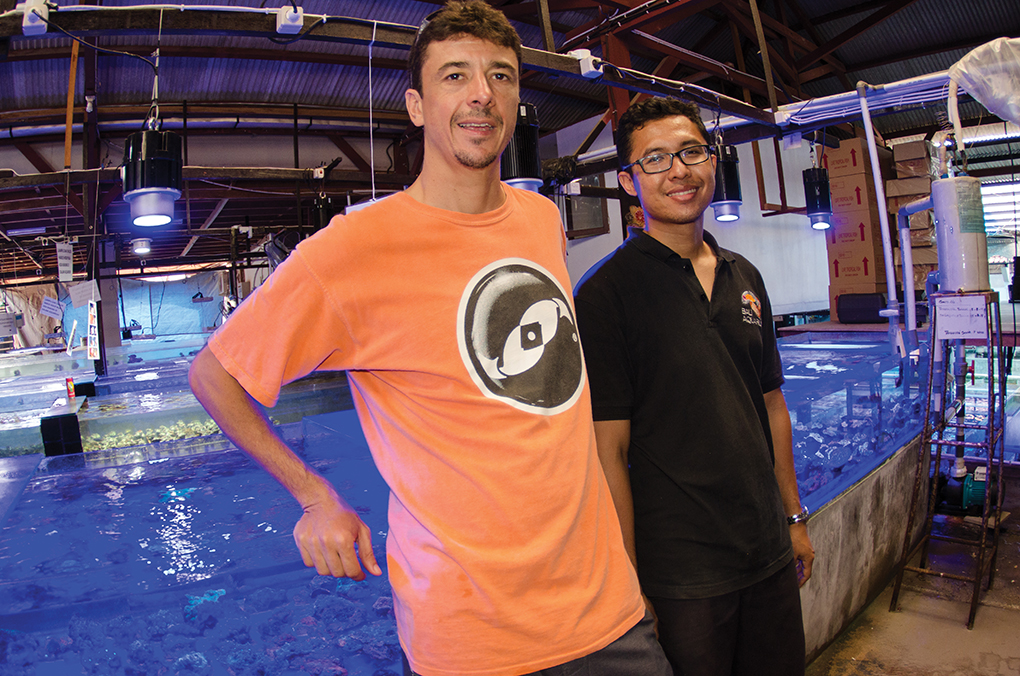
Vincent Chalias and Kadek Putra Manawar at Bali Aquarium.
Having been personally involved in the efforts to reopen the trade, I believe that many outside the process still don’t understand that everything is now different. Indonesia’s coral trade will never be the same, and shouldn’t be, because if we return to the way of doing business in the past, it is only a matter of time before the industry is shut down again. It just takes one person, as head of the Fisheries, Forestry, or Trade department, for example, to be against us, and we can be put out of business at their whim. We never realized before how many government officials hold the power to shutter Indonesia’s coral industry, but Pudjiastuti showed them the way. Even as the industry slowly restarts, we are already aware that local supporters of Pudjiastuti and other activists are calling for another ban.
But the risk to the aquarium trade is much greater than the question of whether Indonesia is allowed to export corals. Having the CITES COP19 meeting in Costa Rica, now only two years away, is going to be a real test for our industry. Any wrongdoing could be the death sentence of the whole marine aquarium livestock industry.
Unfortunately, some major players on our industry remain steadfast in their ways; they are refusing the change their habits. I worry they are choosing to ignore what is happening, or perhaps they lack the vision to understand the larger picture. At some point in the near future, it could be really bad for the aquarium trade to be known as an industry that is unwilling to change.
Lesson Learned?
The future will tell if we have learned our lesson. In the jubilation surrounding the reopening of Indonesia’s coral trade opening, I worry that people will quickly forget what happened. It’s not a victory; we just won a battle, but we are still far from winning the war. As I write this at the end of January, everyone is ecstatic, enthusiastically receiving coral shipments, including corals that originated from wild collection. But the chances of getting more wild corals are very small. Are they turning a blind eye to over a year of closures? Are they ignoring the fact that current Indonesian law already ends the wild harvest of coral by 2021, now less than a year away?
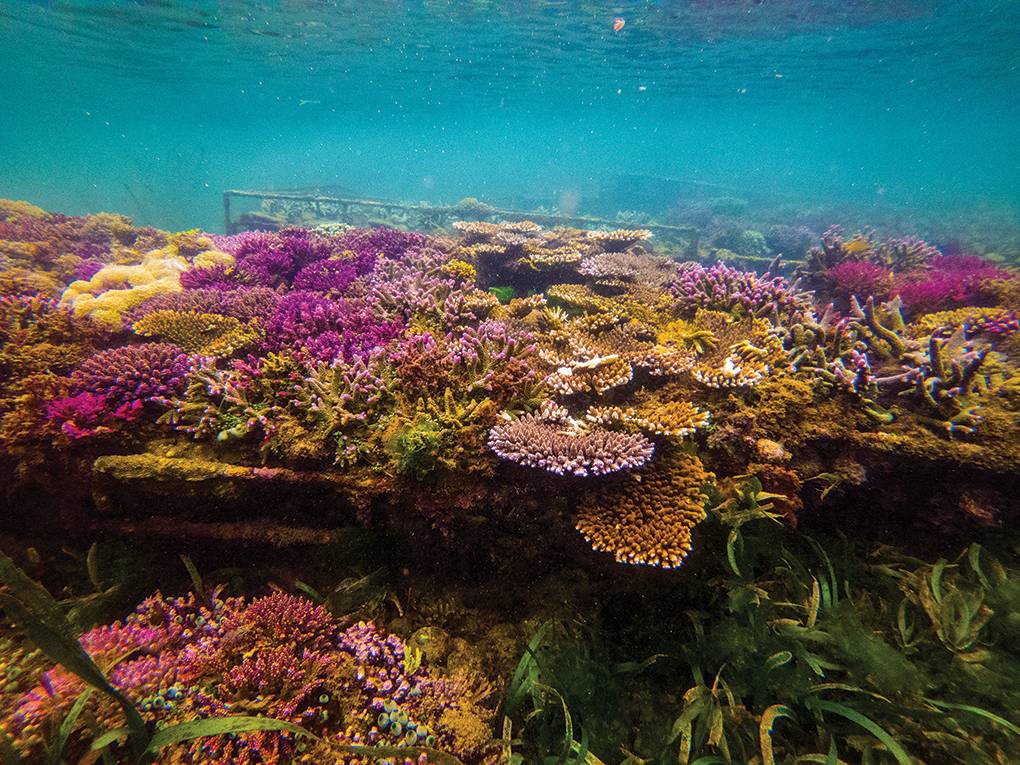
Overgrown rack of Acropora broodstock colonies during the work stoppage that halted fragging as even cultured corals could not be shipped.
For cultured corals, mariculture businesses still face a long road. It will take time before exports start occurring consistently, and there will likely not be as many exports as there were in the past. But I am optimistic. If nothing goes wrong, Indonesian coral farmers will provide a steady supply of the most beautiful maricultured corals. Exporters seem committed to mariculture; hopefully they won’t forget our recent battle. I hope they see the stable path forward that maricultured corals can provide.
I also hope that the market will support the revitalized, and different, Indonesian coral trade. If prices can stay viable for the producers, coral farming can be done in a healthy environment where everyone makes a living. I believe coral farming represents the largest opportunity for the Indonesian aquarium trade; its benefits are capable of positively impacting many people, which is key to the health, sustainability, and long-term viability of the industry. In the past, we got what we paid for—unrealistically cheap corals—and that resulted in the industry grinding to a halt. Are we ready to pay for a sustainable mariculture industry?
Having only expensive Australian corals to choose from for two years has made people realize the real value of corals. It takes a lot of work to maintain ocean farms. The risk of losing corals or an entire farm to climate change, storms, and tsunamis is high. Coral farming is only sustainable if people make a decent living from it. Unfortunately, if the prices for corals go down, the industry will follow the same path.
What will Indonesia’s coral trade look like in the future?
I think farming still has a bright future. Farming is the only way to compensate the losses of wild coral collection. If prices are kept on the high side, it becomes financially viable to operate land-based farms all around the world.
We must add climate change to the equation. North Bali just experienced another year of coral reef bleaching, and it’s still occurring. So far, coral farms haven’t been affected, but this luck may not last. The future viability of ocean-based mariculture becomes questionable if farmers suddenly risk losing part or all of their crops every couple years. Even if farmers select bleaching-resistant strains of corals, getting these corals to market when they needed may be too much of a challenge.
Eventually, I believe that all corals will have to be farmed in climate-controlled, land-based facilities. The hope is that the process continues to become more energy-efficient and affordable. I’m dismayed by my own forecast; ocean-based coral mariculture is a very good, sustainable, and ecologic alternative for coastal fishing communities in remote areas of the Coral Triangle. Coral mariculture represents an excellent revenue opportunity in places where it’s desperately needed. Climate change is the wild card that can put this all at risk.
I also believe that sexually propagated corals will start to appear in the industry, like what we now see with captive-bred fish. Particular opportunities exist among corals that are impossible to mariculture in
decent numbers, such as Trachyphyllia, Catalaphyllia, Acanthophyllia. Sexual propagation of these corals means they’ll be widely available and sold at small sizes, which is acceptable in the market, as people are already accustomed to purchasing small coral fragments. Most of the research happening right now about how to save the Great Barrier Reef is focused on sexual reproduction, so we can expect coral breeding to become more mainstream in the future.
As I turn my thoughts back to Indonesia’s coral trade, I must repeat myself: We have won a battle, but we haven’t won the war. We all need to stay cautious and keep moving forward towards a healthy, sustainable coral industry that can be enjoyed all around the world. It’s difficult to have a clear vision of what is to come in the near future for Indonesia’s coral industry, but there is reason for hope!
Vincent Chalias is a marine biologist and a founder of Bali Aquarium, a leading coral mariculture and marine aquarium livestock collection operation based in Badung, Bali, Indonesia.
http://www.baliaquarium.net
Additional Reading
“After the coral ban, I lost everything.”
BBC Report
https://www.bbc.com/news/amp/business-51629600





Don’t be greedy, Vincent, or any of you other Indonesian suppliers. People are paying $400 USD for a single head of torch coral now. It’s preposterous. I’ve been in the hobby 25 years now, and Euphyllia have always been inexpensive. Now that you people have a taste for the high prices, you’ll never let it slide down to reasonable levels again, even when exports really ramp up, and you’ll keep banging the drum of “supply is very limited.” Greed, greed, greed from all of you, from the supplier on down to the fragger who sells a less than 1″ frag for $200.
Howdy Gary, greetings from this part of the world.
So just a few things that I picked up on in the article since I only know ins-and-outs of an unrelated industry operating here.
Shared Ministry responsibilities and additional Government regulation, “In Bali, the government plans to invest in a new screening facility, with another set of X-ray machines and climate-controlled rooms for enhanced inspections.”
– When has any government intervention not incurred cost to those operating a business?
I read the article that vendors will need to double and triple handle export items, ensure contingencies are met if holidays appear or the inspector / approver catches a cold, and meet any additional permitting paperwork that has yet to be fully socialized/realized with all regulatory bureaucracies.
The other part I read briefly was that efforts to build diversity for exports with wild stock and a commercial risk of bleaching events is becoming extremely tough to measure when planning.
For the $400 torch coral head stuff that followed the mushroom thing – damn if I didn’t try to frag some of them peppermint angels and goddam things up and died. New to the hobby.
I would love to purchase some corals for my tank. Please email me with a website and pricing. Hopefully they are reasonable. I would love to help these islanders get back to work as I am an islander myself. U.S. Virgin Islander although anyway everything I can find locally is $90 to $320 for a 1 inch frag wich only a few who have that kind of money to spare will actually pay it. Now with the pandemic and people losing lots of their income I’m pretty sure sales where I live will drop off way more than before the high outrageous price n name of coral game came to be! Who calls zoas of a specific color and pattern by the name of Panty droppers or blue eyed bi-ches??? Just to get more money for them??? If you want to sell your coral frags I would gladly accommodate you to help provide for your family legally if it can be done as long as your prices are reasonable! Hope to hear back from you n have a good day.
Captive fish breeding is another piece to global warming.
Land based coral farming al over the world would warm up too.
Give up this shit
Sustainable harvesting from coral reefs ist the only good way.
Sources?